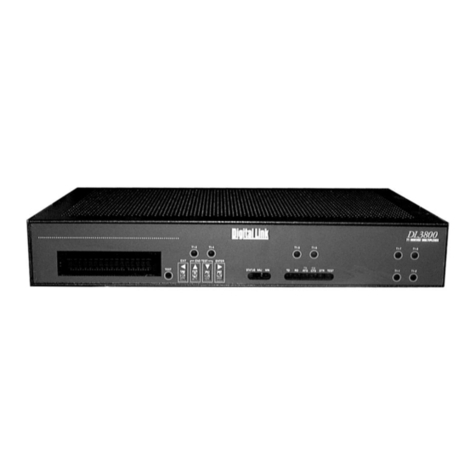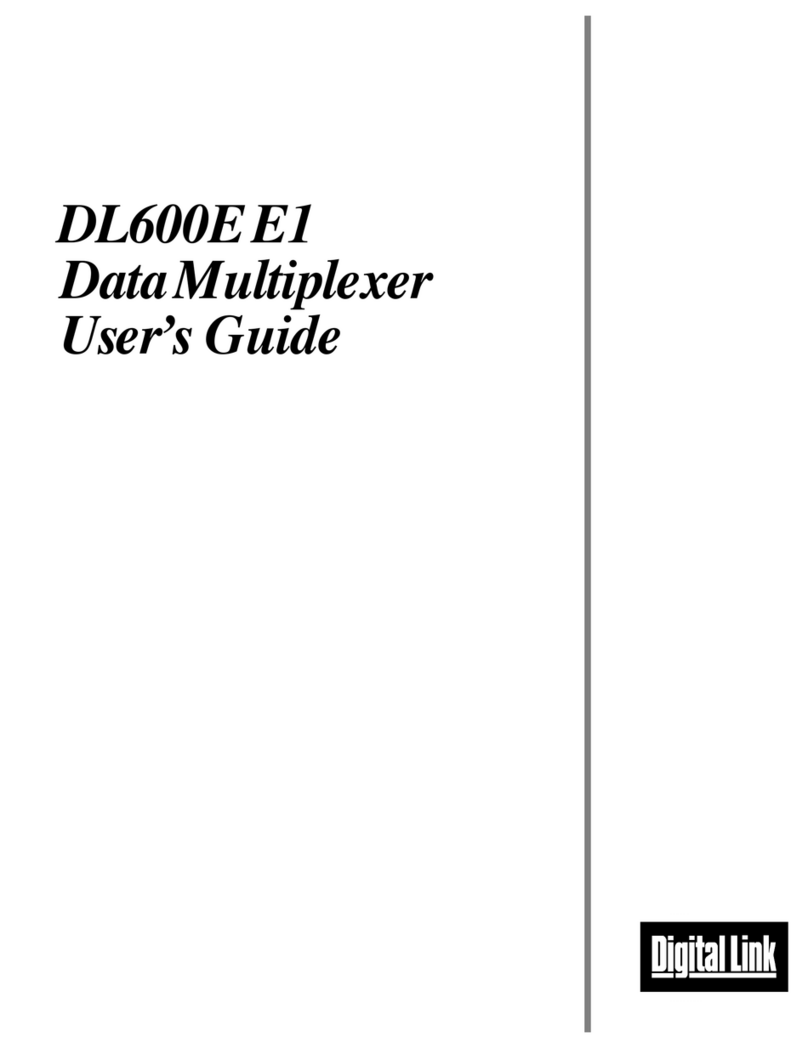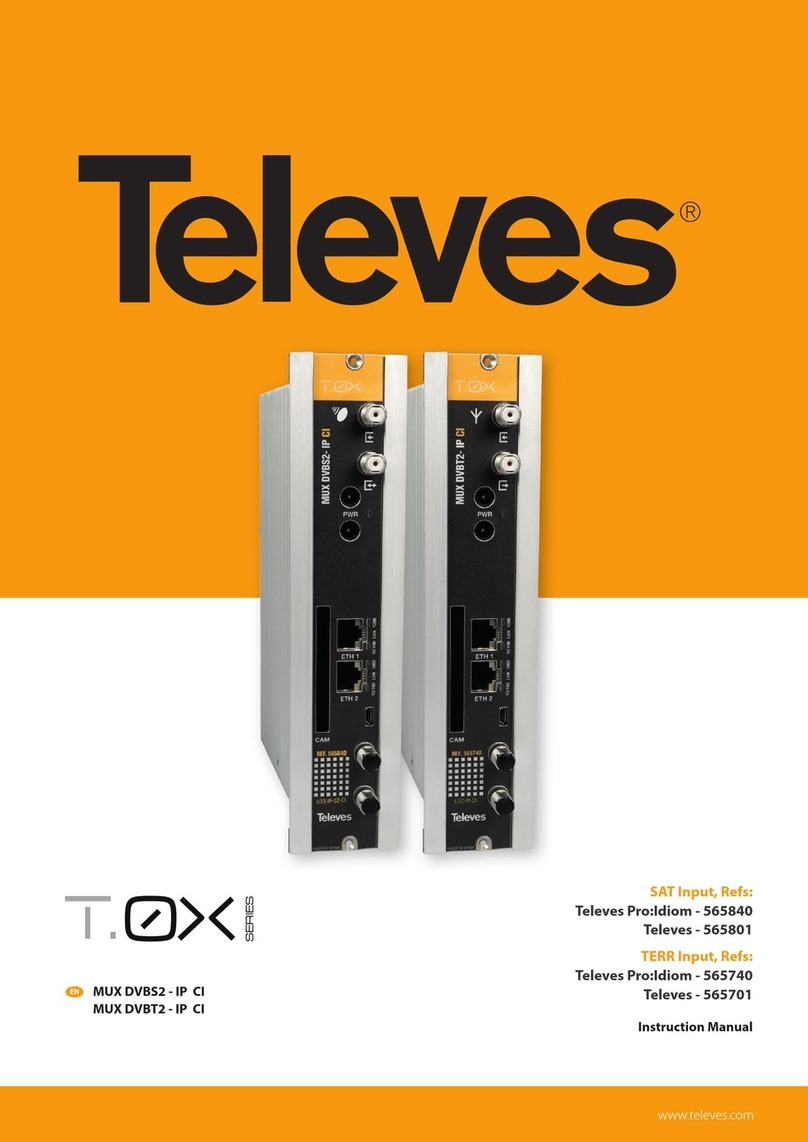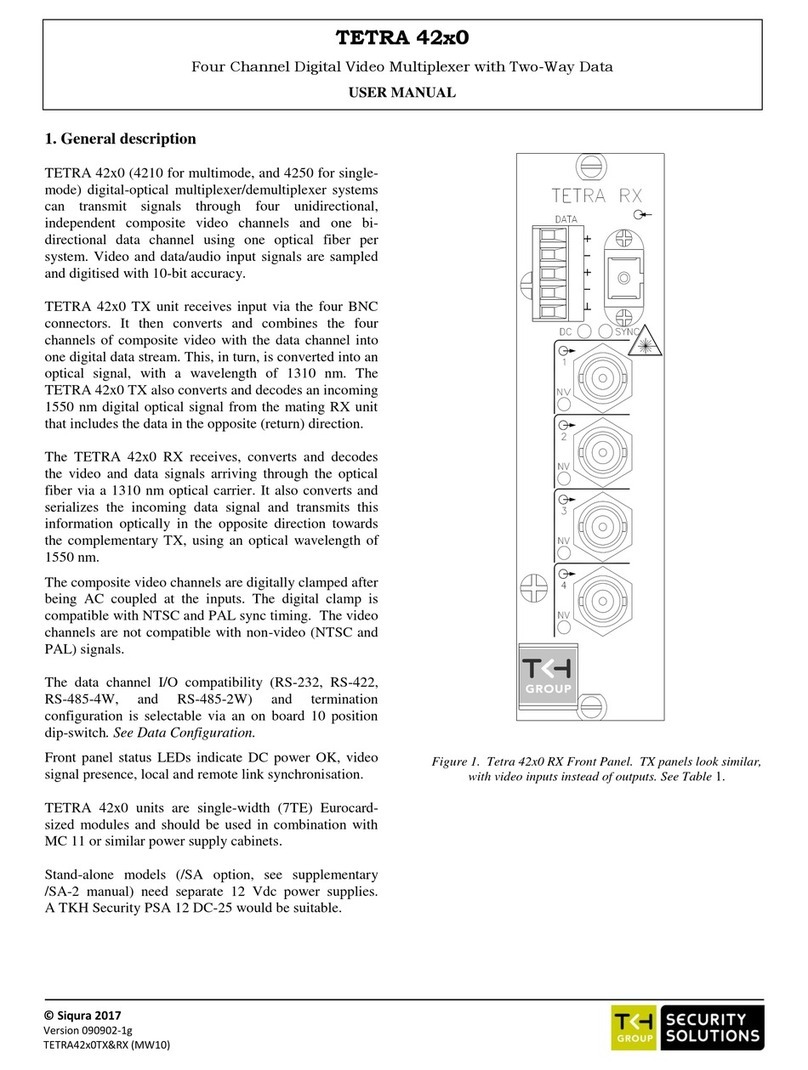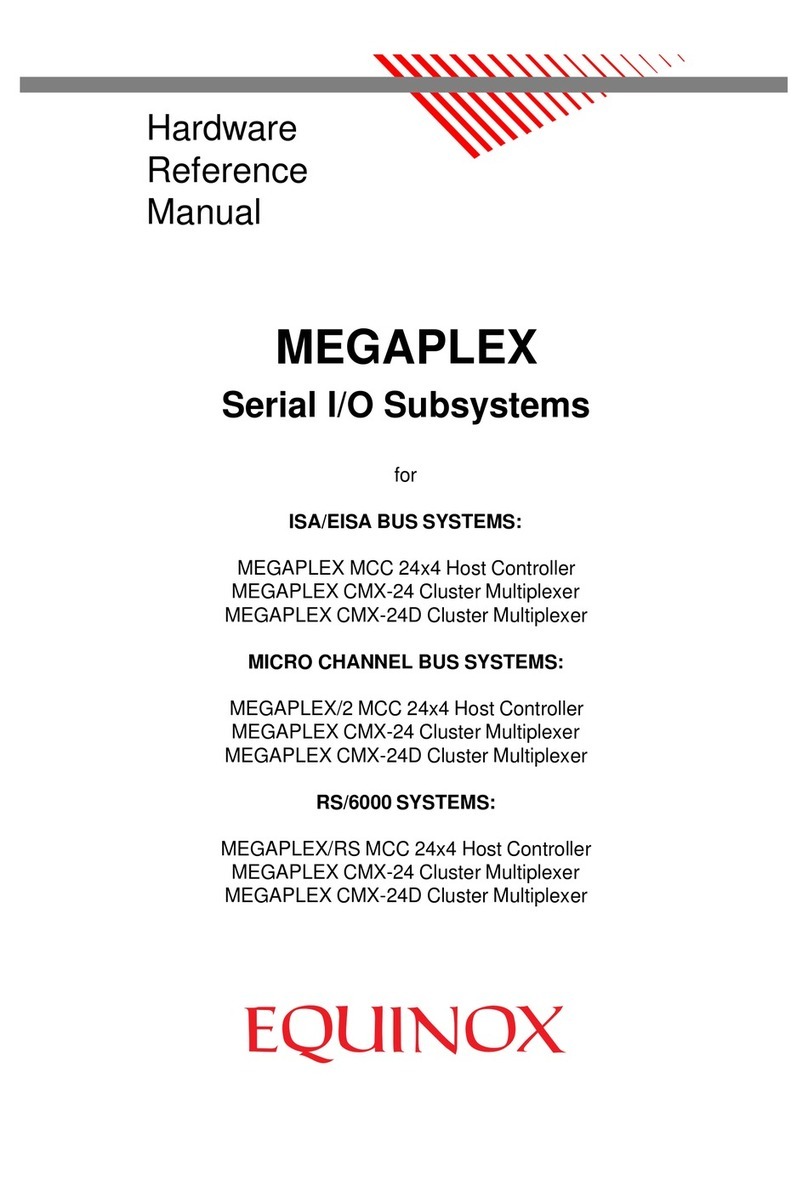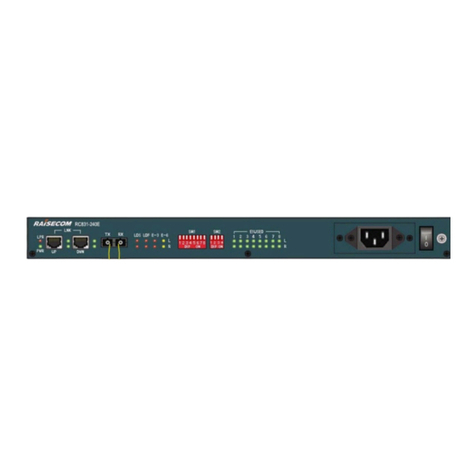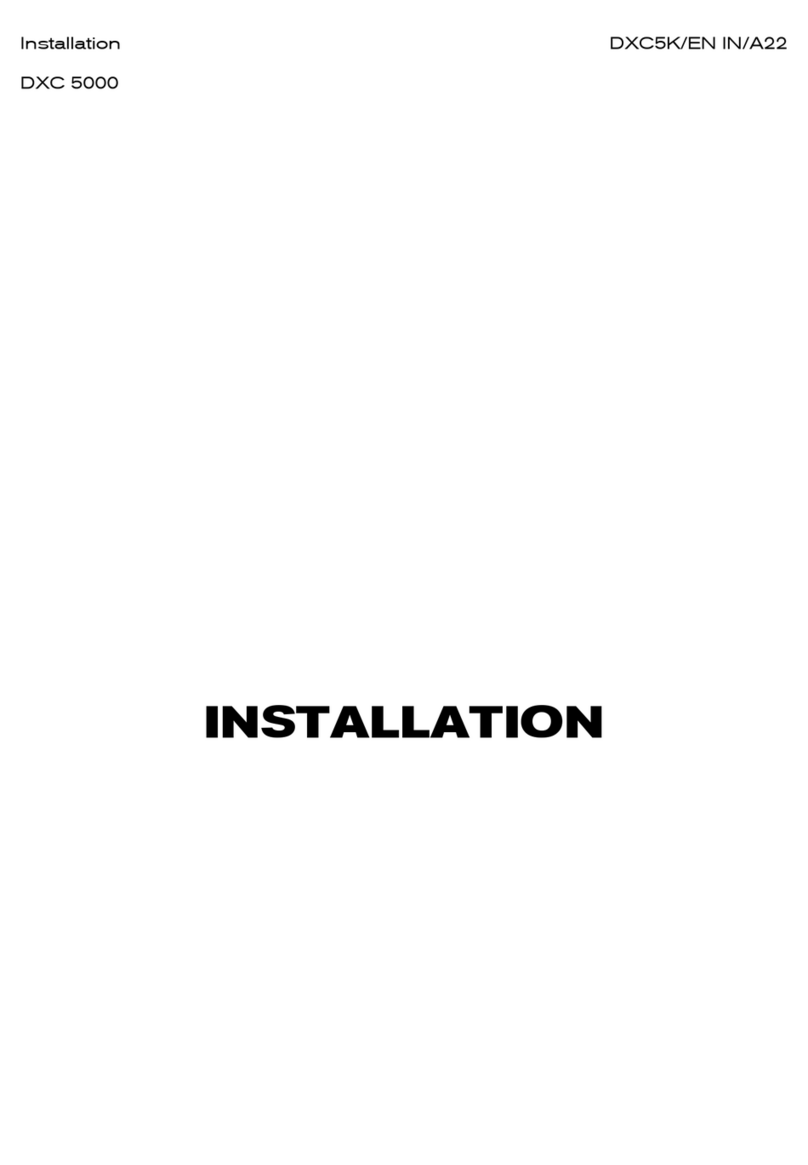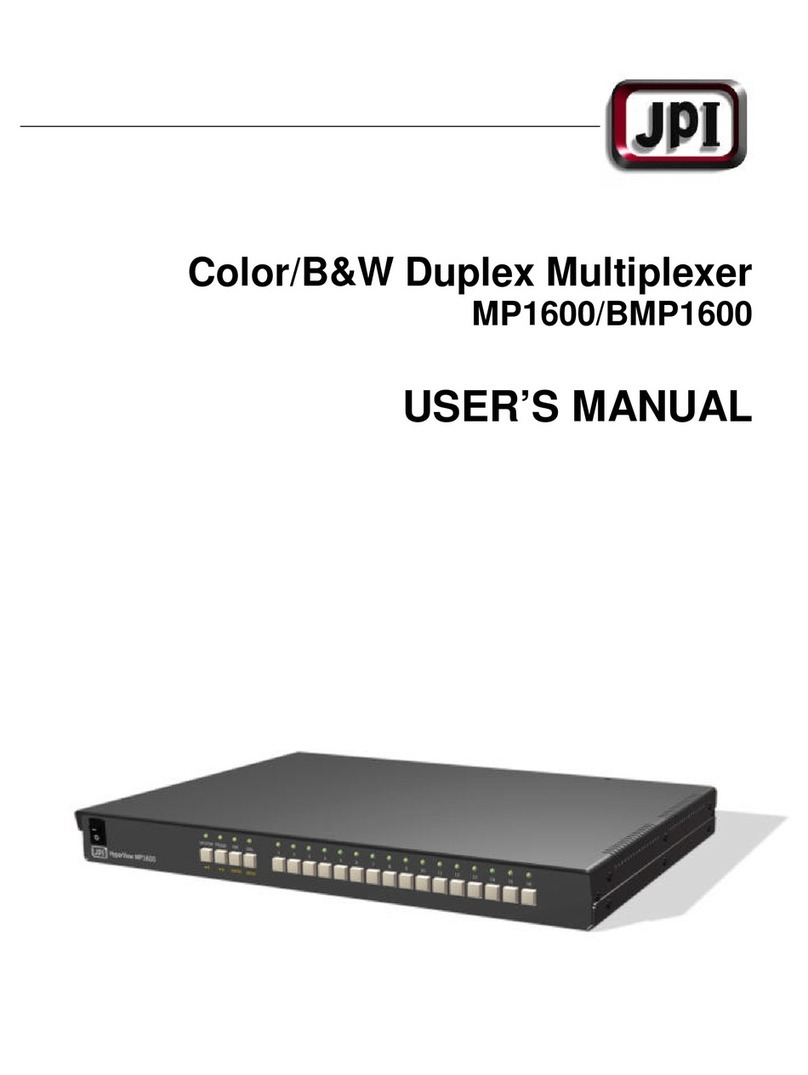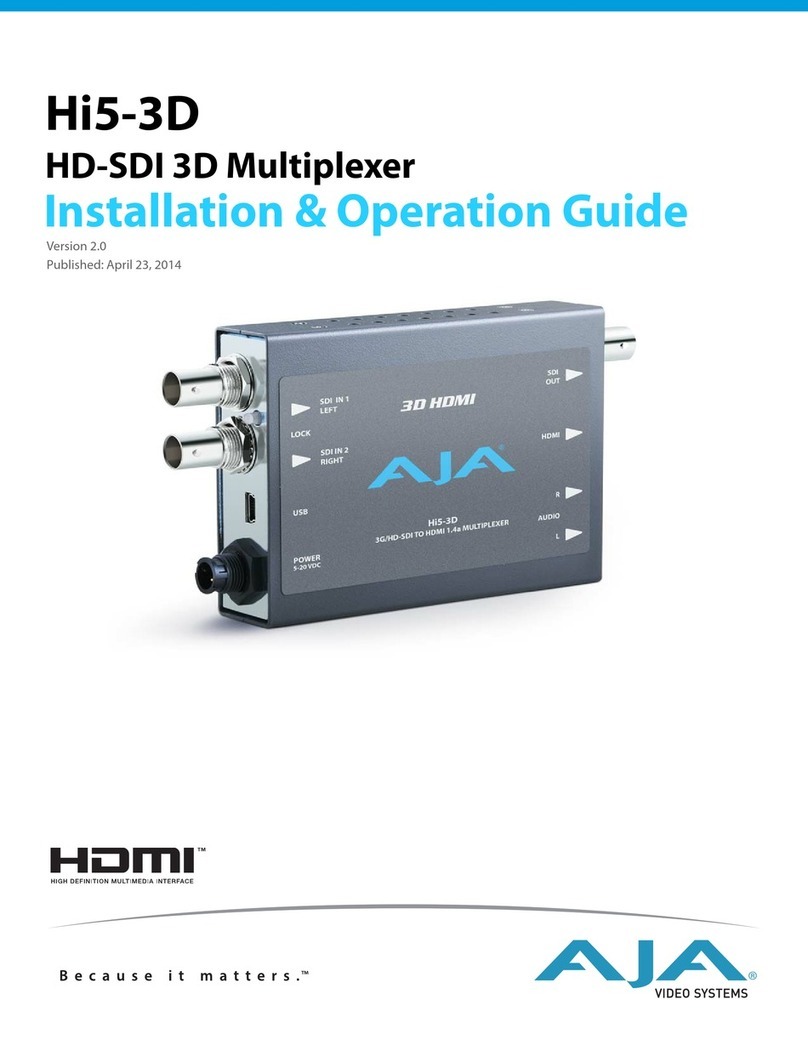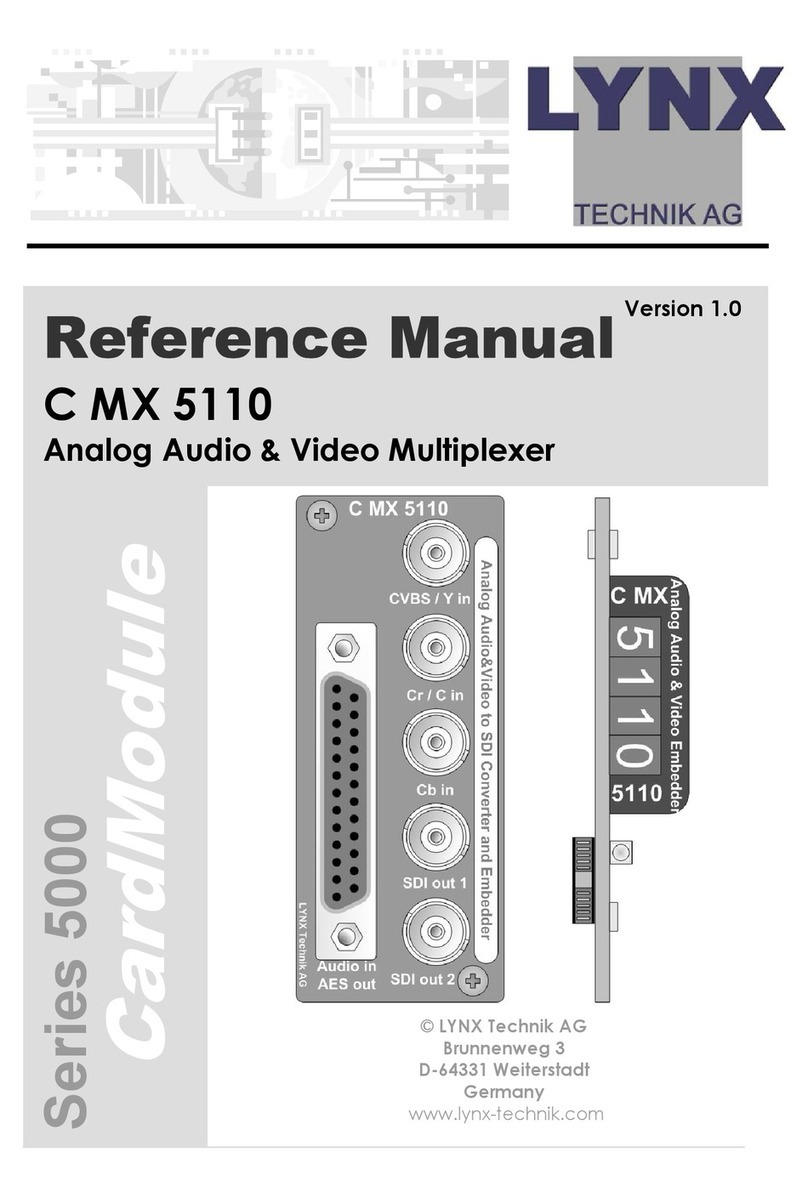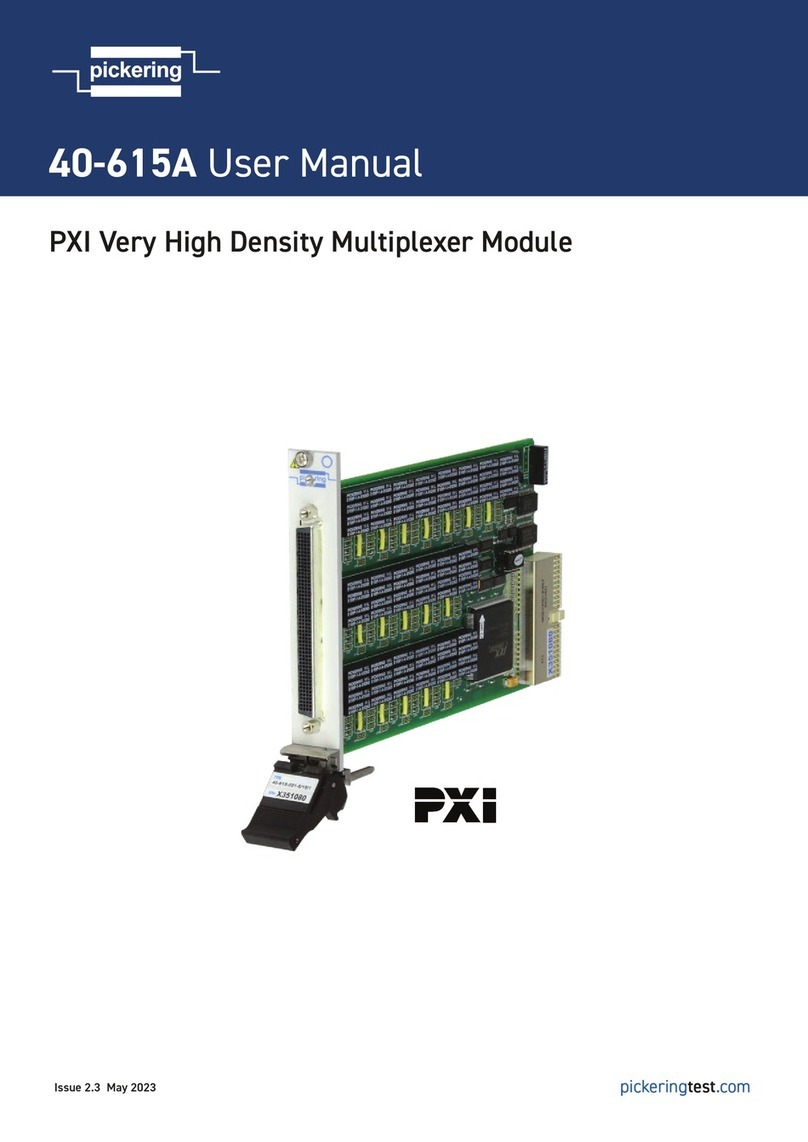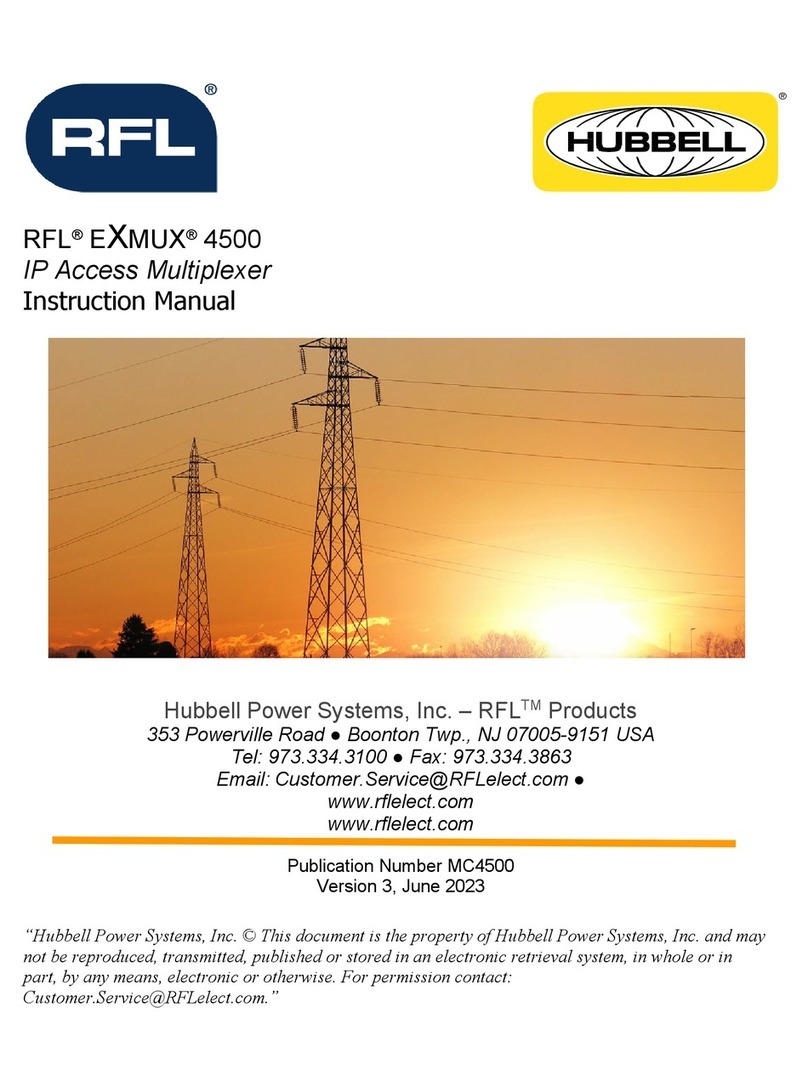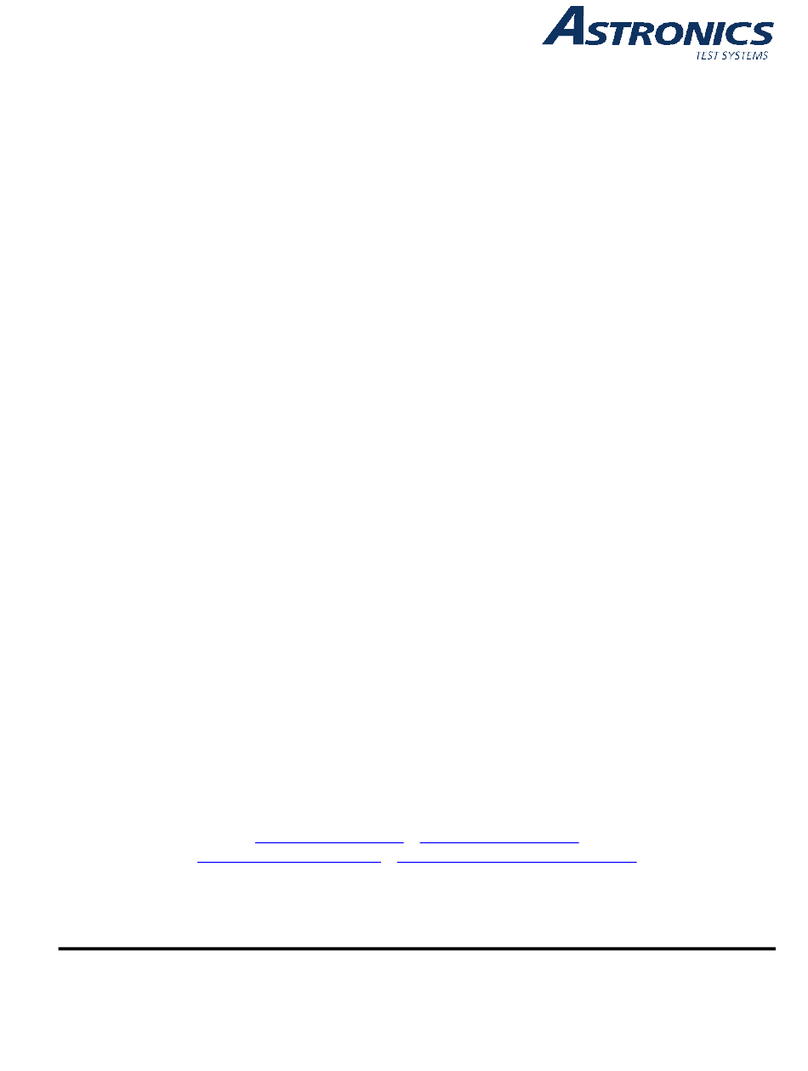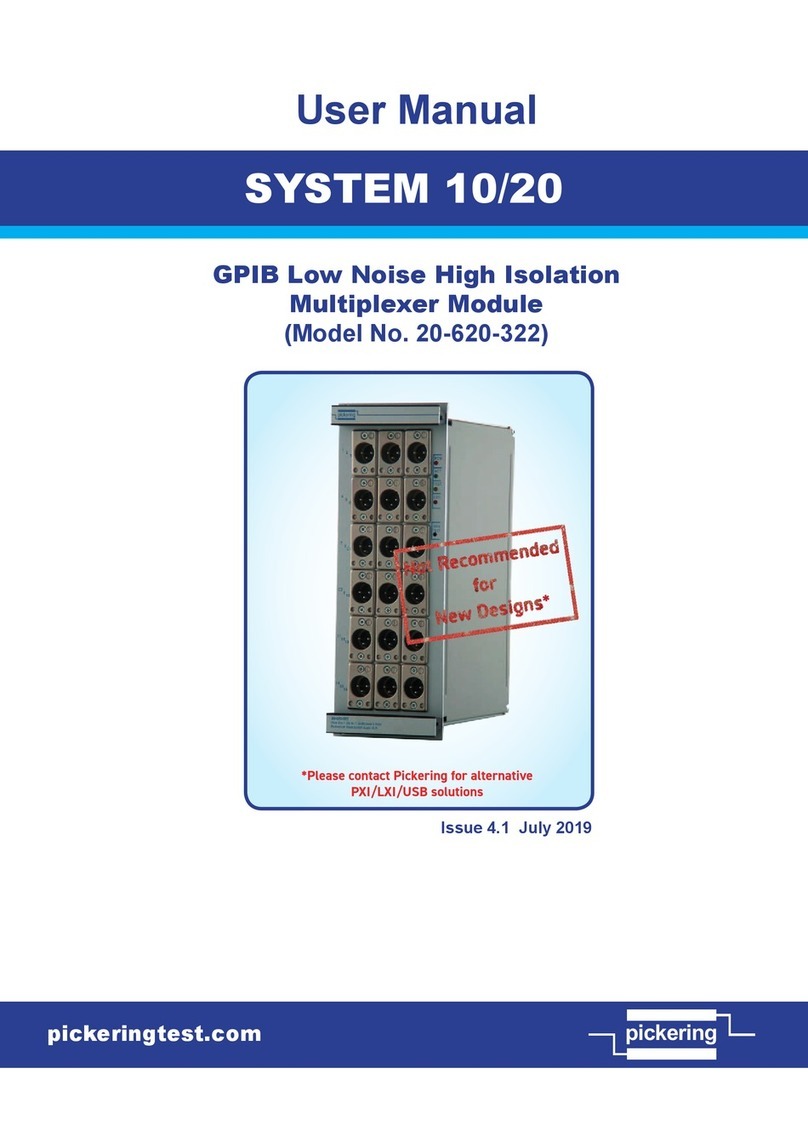Digital Link DL3100 User manual

T3 Access
Multiplexer
DL3100
User’s Guide
Part 098-20590-02 Rev. C
November 1998

Copyright
Copyright © 1998, Digital Link Corporation
World copyright reserved. No part of this publication may be stored in
a retrieval system, transmitted, or reproduced in any way, including
but not limited to photocopy, photograph, magnetic, chemical, or other
record, without the prior agreement and written permission of Digital
Link Corporation.
Product Limited Warranty
Digital Link warrants to buyer that any unit shipped to buyer, under
normal and proper use, will be free from defects in material and
workmanship for a period of 24 months from the date of shipment to
buyer.
The foregoing warranty is exclusive and in lieu of all other warranties,
expressed or implied, including, but not limited to, any implied
warranties of merchantability or Þtness for a particular purpose.
Remedies and Limitations of Liability
All claims for breach of the foregoing warranty shall be deemed waived
unless notice of such claim is received by Digital Link during the
applicable warranty period and unless the items claimed to be defective
are returned to Digital Link within thirty (30) days after such claim.
Failure of Digital Link to receive written notice within the speciÞc
period shall constitute a waiver by buyer of any such claim irrespective
of whether the facts giving rise to such a claim shall have then been
discovered or whether processing, further manufacturing, other use or
resale of such items shall have taken place.
Buyer's exclusive remedy, and Digital Link's total liability, for any and
all losses and damages arising out of any cause whatsoever, (whether
such cause is based in contract negligence, strict liability, other tort or
otherwise) shall in no event exceed the repair price of the unit from
which such cause arises. In no event shall Digital Link be liable for
incidental, indirect, special or consequential damages resulting from
any such cause event if Digital Link is aware of the possibility of such
damages. Digital Link may, atits sole option, either repair or replace
defective goods or work, and shall have no further obligation to buyer.
Return of the defective items to Digital Link shall be at buyer's risk and
expense.
ii DL3100 User’s Guide—November 1998

Digital Link shall not be liable for failure to perform its obligations if
such results directly or indirectly from, or is contributed to by, any act
of God or of buyer; riot; Þre; explosion; accident; ßood; sabotage;
epidemics; delays in transportation; lack of or inability to obtain raw
materials, components, labor, fuel or supplies; governmental laws,
regulations or orders; or labor trouble, strike, or lockout (whether or
not such labor event is within the reasonable control of Digital Link);
other circumstances beyond Digital Link's reasonable control, whether
similar or dissimilar to any of the foregoing.
Disclaimer
Digital Link Corporation makes no representation of warranties with
respect to the contents of this document and speciÞcally disclaims any
implied warranties of merchantability or Þtness for any particular
purpose. Further, Digital Link Corporation reserves the right to revise
this publication and to make changes in it from time to time without
obligation to notify any person or organization of such revision or
changes.
ISO Compliance
Warning
The DL3100 complies with FCC Part 15 of the Federal Communications
Commission (FCC) Rules concerning radio frequency emissions for
Class A computing devices. The following section is required by the
FCC.
Caution
In accordance with FCC Part 15 section 15.21, changes or modiÞcations
made by the buyer that are not expressly approved by Digital Link
Corporation could void the buyerÕs authority to operate this
equipment.
Products Manufactured Under
An ISO 9001 CertiÞed
Quality Management System
iii

This equipment has been tested and found to comply with the limits
for a Class A digital device, pursuant to Part 15 of the FCC Rules.
These limits are designed to provide reasonable protection against
harmful interference when the equipment is operated in a commercial
environment. This equipment generates, uses, and can radiate radio
frequency energy and, if not installed and used in accordance with the
instruction manual, may cause harmful interference to radio
communications. Operation of this equipment in a residential area is
likely to cause harmful interference in which case the user will be
required to correct the interference at his own expense.
This Class A digital device meets all requirementsof the Canadian
Interference-Causing Equipment Regulations.
Cet Appareil numerique de la classe A respecte toutes les exigences du
Reglement sur le materiel brouilleur du Canada.
Customer Information
The equipment complies with Part 68 of the FCC Rules. You will Þnd
the label located on the bottom of the enclosure. This label contains the
FCC Registration Number and Ringer Equivalence Number (REN) for
this equipment. You must, upon request, provide this information to
your telephone company.
NOTE: As per the Voluntary Control Council for Interference by
Information Technology Equipment (VCCI), the DL3100 complies with
VCCI Class 1 ITE. This equipment is in the 1st Class category
(information equipment to be used in commercial and/or industrial
areas) and conforms to the standards set by the Voluntary Control
Council for Interference by Information Technology Equipment aimed at
preventing radio interference in commercial and/or industrial areas.
Consequently, when used in a residential area or in an adjacent area
thereto, radio interference may be caused to radios and TV receivers,
etc. Read the instructions for correct handling.
iv DL3100 User’s Guide—November 1998

Incidence of harm: If your telephone equipment causes harm to the
telephone network, the telephone company may discontinue your
service temporarily. If possible, they will notify you in advance. But if
advance notice is not practical, you will be notiÞed as soon as possible.
You will be informed of your right to Þle a complaint with the FCC.
Rights of the telephone company: Your telephone company may make
changes in its facilities, equipment, operations or procedures that could
affect the proper functioning of your equipment. If they do, you will be
notiÞed in advance to give you an opportunity to maintain
uninterrupted telephone service.
Malfunction of the equipment: In the event this equipment should fail
to operate properly, disconnect the unit from the telephone line. Try
using another FCC approved telephone in the same telephone jack. If
the trouble does not persist and appears to be with this unit,
disconnect the unit from the telephone line and discontinue use of the
unit until it is repaired. Please note that the telephone company may
ask that you disconnect this equipment from the telephone network
until the problem has been corrected or until youÕre sure that the
equipment is not malfunctioning.
v

vi DL3100 User’s Guide—November 1998

vii
Table of Contents
Preface xix
Audience xix
Organization xix
Conventions xx
Symbols xx
Typography xxi
Digital Link Technical Support xxii
Returning a Unit xxii
Send Us Your Comments xxiii
Chapter 1, DL3100 Quick ConÞguration 1-1
Required Pre-Configuration Information 1-1
Getting Started 1-2
Setting a Parameter in a Menu 1-2
Unit Configuration 1-3
Configuration Actions 1-4
T3MB Configuration 1-4
Configuration Actions 1-5
DTE Port Configuration 1-6
Configuration Actions 1-7
Chapter 2, About the DL3100 2-1
DL3100 Components 2-1
DL3100 Features 2-2
How the DL3100 Works 2-3
How Signal Flows from T3 Interface to the DTE Board 2-3
How Signal Flows from Data Interface to T3 Interface 2-3

viii DL3100 User’s Guide—November 1998
Chapter 3, Mechanically Installing the DL3100 3-1
Preparing for the Installation 3-1
Required Location and Equipment 3-2
About Your Power Supply 3-3
About Grounding 3-3
About Mounting the Unit in a Rack 3-4
Front-mounting the Unit in a 19-inch Rack 3-4
Front-mounting in a 23-inch Rack 3-5
Mid-mounting the DL3100 3-5
Installing the DL3100 with AC Power 3-6
Installing the DL3100 with DC Power 3-6
Connecting the DL3100 to a T3 Network 3-8
Connecting the DL3100 to a DTE 3-8
Connecting the DL3100 to an External Clock Source 3-9
Chapter 4, ConÞguring the DL3100 4-1
Required Information 4-1
Keeping a Record 4-1
Connecting an ASCII Terminal 4-1
Checking the Default Settings 4-1
Connecting a Terminal to a Comm (Terminal) Port 4-2
Connecting the Terminal Port through a Modem 4-3
Connecting Multiple Units in a Daisy-chain 4-3
Logging on to the DL3100 4-5
Using the Terminal Interface 4-6
Selecting a Device 4-6
What YouÕll See on the Screen 4-7
Node/T3MB Main Menu Selections 4-8
Configuring the DL3100 4-10
Configuring the Node 4-10

Table of Contents ix
Unit Configuration Menu Parameters 4-11
Login Configuration 4-14
Login Configuration Parameters 4-15
Configuring the T3MB 4-16
T3MB Configuration Menu Parameters 4-16
Configuring the T3MB TDL 4-19
T3MB TDL Configuration Menu Parameters 4-20
Configuring the HSDB and the HVDB 4-21
HSDB and HVDB Main Menu Parameters 4-22
Configuring the HSDB 4-22
HSDB Configuration and Connections Menu Parameters 4-23
Configuring the HVDB 4-25
HVDB Configuration and Connections Menu Parameters 4-25
Configuring for SNMP Management 4-26
SNMP Configuration Menu Parameters 4-27
Chapter 5, Monitoring and Managing the DL3100 5-1
Node/T3MB Main Menu Selections 5-2
Accessing the Remote Node Terminal 5-3
Viewing the Status of the T3 Link 5-5
Monitoring Alarms and Status 5-5
Monitoring Network Alarms and Status 5-5
Monitoring HSDB and HVDB Alarms and Status 5-9
Current HSDB Alarms and Status Items Menu Parameters 5-10
Current HVDB Alarms and Status Items Menu Parameters 5-12
Monitoring Statistics 5-13
Monitoring Network Statistics 5-14
T3MB Statistics Parameters 5-15
Comparison of RFC 1407 and the DL3100 Statistics Menu 5-18
Notes on RFC1407 MIB far end statistics support 5-18
RFC 1407 Statistics Descriptions 5-19
Monitoring HSDB and HVDB Statistics 5-20

x DL3100 User’s Guide—November 1998
Displaying the Event History 5-22
Event History Menu Parameters 5-23
Monitoring T3MB Bandwidth and Connections 5-24
Using the System Utilities 5-24
Downloading Software 5-25
Deleting the Entire Node Configuration 5-26
Backing Up the Database 5-27
Chapter 6, Diagnosing and Troubleshooting the DL3100 6-1
Running Diagnostic Tests 6-2
Running Tests Using the Terminal Interface 6-2
Testing the T3MB DTE/Network Interface 6-2
Network Loopback 6-3
DTE Loopback 6-4
Send FEAC Code 6-4
Testing the HSDB/HVDB DTE/Network Interface 6-4
NET/DTE Loopback 6-5
Running Tests from the Front Panel 6-6
Running Network Tests 6-6
DTE Loopback 6-7
Running HSDB/HVDB Tests 6-7
Running a Lamp Test 6-7
Troubleshooting the DL3100 6-7
DL3100 Problems 6-8
Chapter 7, Using the Front Panel Interface 7-1
What You Cannot Do from the Front Panel Interface 7-1
The Front Panel 7-1
Front Panel Keys 7-2
How to Navigate the Front Panel Interface 7-3

Table of Contents xi
What You See 7-3
Editing a Parameter 7-4
Preparing for the Initial Configuration 7-5
Required Information 7-5
Keeping a Record 7-6
Selecting the Remote or Local Unit 7-6
Configuring the DL3100 7-6
The Node Config Submenu 7-7
Node Config Menu Parameters 7-8
The Comm Port Parameters 7-8
The T3 Net Config Menu 7-9
Configuring the Data Ports 7-10
Configuring the HSDB 7-10
HSDB Config Menu Parameters 7-10
Configuring the HVDB 7-11
HVDB Config Menu Parameters 7-12
Displaying Status and Statistics 7-12
Monitoring the Local and Remote Units 7-13
Monitoring the Node Status 7-13
Monitoring the Network Status 7-14
Monitoring HSDB/HVDB (1, 2, 3) Status 7-14
Monitoring Network Statistics 7-14
Clearing Network Statistics 7-16
Monitoring HSDB/HVDB Statistics 7-16
Clearing HSDB/HVDB Statistics 7-18
Using the Test Menu 7-18
Starting and Ending a Test 7-19
During a Test 7-20
Appendix A, DL3100 Technical SpeciÞcations A-1
T3 Network Port Interface A-1

xii DL3100 User’s Guide—November 1998
External Clock Specifications A-1
Data Interface A-2
Interface Connectors A-2
Communication Port (ASCII) A-3
Communication Port (SNMP) A-3
Diagnostics A-4
Power A-4
Mechanical A-4
Environmental A-5
Regulatory A-5
Downloadable Software A-5
Alarms A-6
Alarm Types A-6
Equipment Grounding Conductor A-6
Fan Filter A-7
Front Panel LEDs and Connectors A-7
DL3100 Cable Model Numbers A-9
Factory Default Configuration A-9
Configuration Worksheet A-11
Appendix B, DL3100 Connector and Pin Assignments B-1
DB-25 to V.35 Data Port Connector Pin Assignments (DL1401) B-1
50-Pin HSSI Data Port Connector Pin Assignments (DL1404) B-2
Glossary G-1
Index I-1

xiii
List of Figures
Figure 1-1 Node/T3 Main Menu 1-3
Figure 1-2 Unit ConÞguration 1-4
Figure 1-3 T3MB ConÞguration 1-5
Figure 1-4 HSDB Main Menu 1-6
Figure 1-5 HSDB ConÞguration and Connections 1-7
Figure 2-1 DL3100 T3 Access Multiplexer 2-1
Figure 3-1 DL3100 Front Mounted in a 19-inch Rack 3-4
Figure 3-2 DL3100 Mid-mounted in a 19-inch Rack 3-5
Figure 3-3 Terminal Block on Rear Panel 3-7
Figure 3-4 DL3100 Rear Panel 3-8
Figure 4-1 Ports on the Rear Panel 4-2
Figure 4-2 Daisy-chained DL3100 units 4-5
Figure 4-3 Node/T3MB Main Menu 4-8
Figure 4-4 Node ConÞguration Menu 4-10
Figure 4-5 Unit ConÞguration Menu 4-11
Figure 4-6 Login ConÞguration Menu 4-14

xiv DL3100 User’s Guide—November 1998
Figure 4-7 T3MB ConÞguration Menu 4-16
Figure 4-8 T3MB TDL ConÞguration MenuÑC-bit Parity 4-19
Figure 4-9 T3MB TDL ConÞguration MenuÑM13 4-20
Figure 4-10 HSDB/HVDB Main Menu 4-22
Figure 4-11 HSDB ConÞguration and Connections Menu 4-23
Figure 4-12 HVDB ConÞguration and Connections Menu 4-25
Figure 4-13 SNMP ConÞguration Menu 4-27
Figure 5-1 Node/T3MB Main Menu 5-1
Figure 5-2 Remote Access of Node/T3MB Main Menu 5-4
Figure 5-3 Remote Node Map 5-5
Figure 5-4 Current T3MB Alarm and Status Menu 5-6
Figure 5-5 Current HSDB Alarms and Status Items Menu 5-10
Figure 5-6 Current HVDB Alarms and Status Items Menu 5-12
Figure 5-7 Current T3MB Statistics Menu - Screen 1 5-14
Figure 5-8 Current T3MB Statistics Menu - Screen 2 5-15
Figure 5-9 Current T3MB Statistics Menu - Screen 3 5-16
Figure 5-10 Current HSDB Statistics Menu 5-21
Figure 5-11 Event History Screen 5-23

List of Figures xv
Figure 5-12 T3MB Bandwidth & Connections Menu 5-24
Figure 5-13 Software Download Menu 5-25
Figure 5-14 Delete Entire Node ConÞguration Menu 5-27
Figure 6-1 T3MB Tests Menu 6-3
Figure 6-2 HVDB Tests Menu 6-5
Figure 7-1 Front Panel Interface 7-2
Figure 7-2 Top Level Menus 7-3
Figure 7-3 ConÞguration Menu 7-4
Figure 7-4 Edit Mode 7-5
Figure 7-5 Selecting the Remote Unit 7-6
Figure 7-6 ConÞguration Submenus 7-7
Figure 7-7 Node ConÞg Menu 7-7
Figure 7-8 T3 Net ConÞg Menu 7-9
Figure 7-9 Display Menu 7-13
Figure 7-10 Network Statistics Menu 7-15
Figure 7-11 Statistics Menu 7-17
Figure 7-12 Test Menu 7-19
Figure A-1 DL3100 Front Panel LEDs and Buttons A-7

xvi DL3100 User’s Guide—November 1998

xvii
List of Tables
Table 3-1 Installation Steps 3-1
Table 3-2 Required Equipment 3-2
Table 4-1 Part Numbers for DL3100 Units 4-4
Table 5-1 T3MB Alarms and Status Conditions 5-6
Table 5-2 Statistics Menu Comparisons 5-18
Table 5-3 RFC 1407 Statistics Detail 5-19
Table 6-1 Self-Test Error Indicator 6-1
Table 6-2 Troubleshooting Guide 6-8
Table A-1 T3 Network Port Interface A-1
Table A-2 External Clock Specifications A-1
Table A-3 Data Interfaces A-2
Table A-4 Interface Connectors A-2
Table A-5 Communication Port (ASCII) A-3
Table A-6 Communication Port (SNMP NMS) A-3
Table A-7 Diagnostics A-4
Table A-8 Mechanical Information A-5

xviii DL3100 User’s Guide—November 1998
Table A-9 Environmental Information A-5
Table A-10 Regulatory Compliances A-5
Table A-11 Alarm Types A-6
Table A-12 Front Panel LEDs, Buttons and Connectors A-7
Table A-13 Cables A-9
Table B-1 DB-25 to V.35 DTE Connector Pin Assignments B-1
Table B-2 50-Pin HSSI Connector Pin Assignments B-2

xix
Preface
The DL3100 UserÕs Guide provides the information you need to install,
test, operate, and manage the DL3100.
Audience
This guide is prepared for network managers and technicians who are
responsible for the installation of LAN-to-WAN equipment, and who
are thoroughly familiar with the network topology in which the
DL3100 is expected to operate.
Organization
Chapter 1, ÒDL3100 Quick ConÞguration,Ó provides quick conÞguration
information for more experienced users.
Chapter 2, ÒAbout the DL3100,Ó provides a description of the DL3100,
the components you should have received in your shipping carton, and
the hardware requirements for setting up the DL3100 in your network.
Chapter 3, ÒMechanically Installing the DL3100,Ó provides guidelines for
mechanically installing the DL3100 components.
Chapter 4, ÒConÞguring the DL3100,Ó shows you how to conÞgure the
DL3100 for your network environment.
Chapter 5, ÒMonitoring and Managing the DL3100,Ó provides
instructions for monitoring and managing the DL3100Õs performance.
Chapter 6, ÒDiagnosing and Troubleshooting the DL3100,Ó provides
instructions for diagnosing and troubleshooting the DL3100.
Chapter 7, ÒUsing the Front Panel Interface,Ó provides procedures for
conÞguring, managing and monitoring the DL3100 from the front
panel.
Appendix A, ÒDL3100 Technical SpeciÞcations,Ó provides regulatory
compliance information, and the electrical, physical, and networking
characteristics of the DL3100].
Appendix B, ÒDL3100 Connector and Pin Assignments,Ó details
connector and pin assignments for the DL3100.

xx DL3100 User’s Guide—November 1998
Conventions
This section describes the conventions used to delineate speciÞc types
of information throughout Digital Link user guides.
Symbols
Symbols denote text that requires special attention. The information
contained alongside a symbol corresponds to one of four levels of
severity:
NOTE: Follow guidelines in this, or the previous, paragraph to use the
Digital Link product more effectively.
CAUTION: Follow guidelines in this, or the previous, paragraph to
avoid equipment damage or faulty application.
WARNING: Follow the instructions in this, or the previous, paragraph
to avoid personal injury.
ELECTRO-STATIC DISCHARGE — CAUTION: Follow the instructions in
this, or the previous, paragraph to avoid the discharge of static
electricity, and subsequent damage to the equipment.
Table of contents
Other Digital Link Multiplexer manuals
Popular Multiplexer manuals by other brands
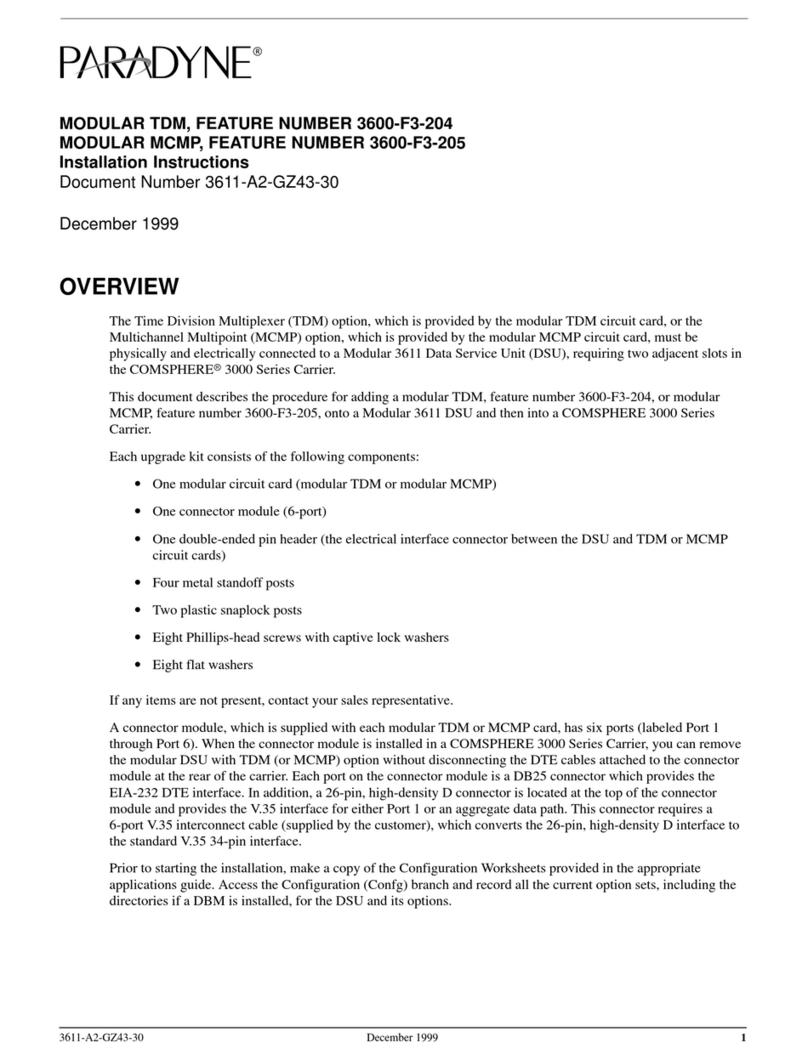
Paradyne
Paradyne COMSPHERE 3611 installation instructions
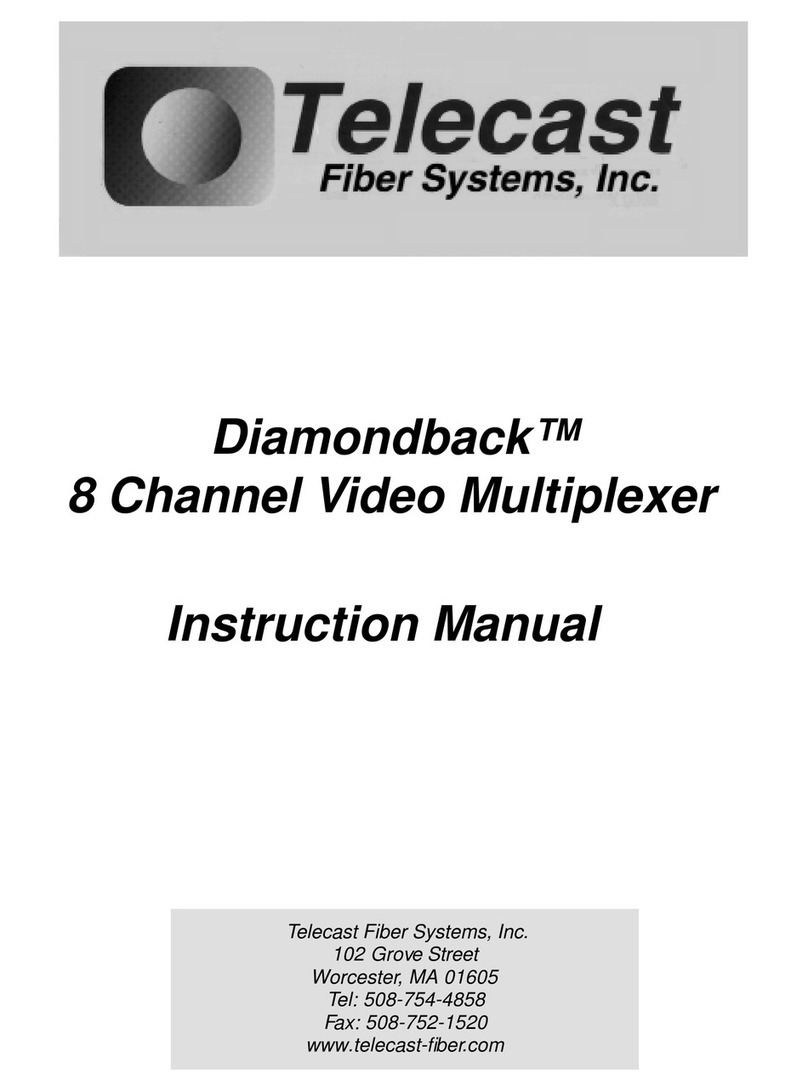
Telecast
Telecast Diamondback instruction manual

Tunstall
Tunstall Flamenco 77 0270 00 installation instructions
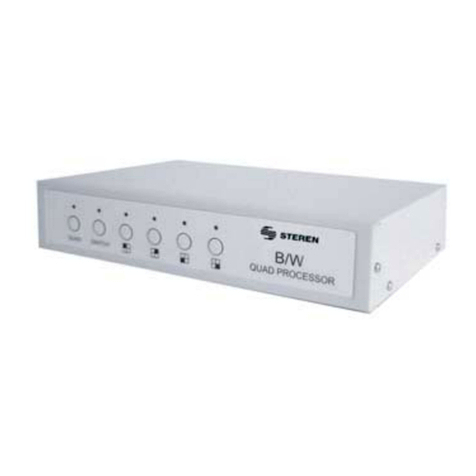
Steren
Steren CCTV-900 instruction manual
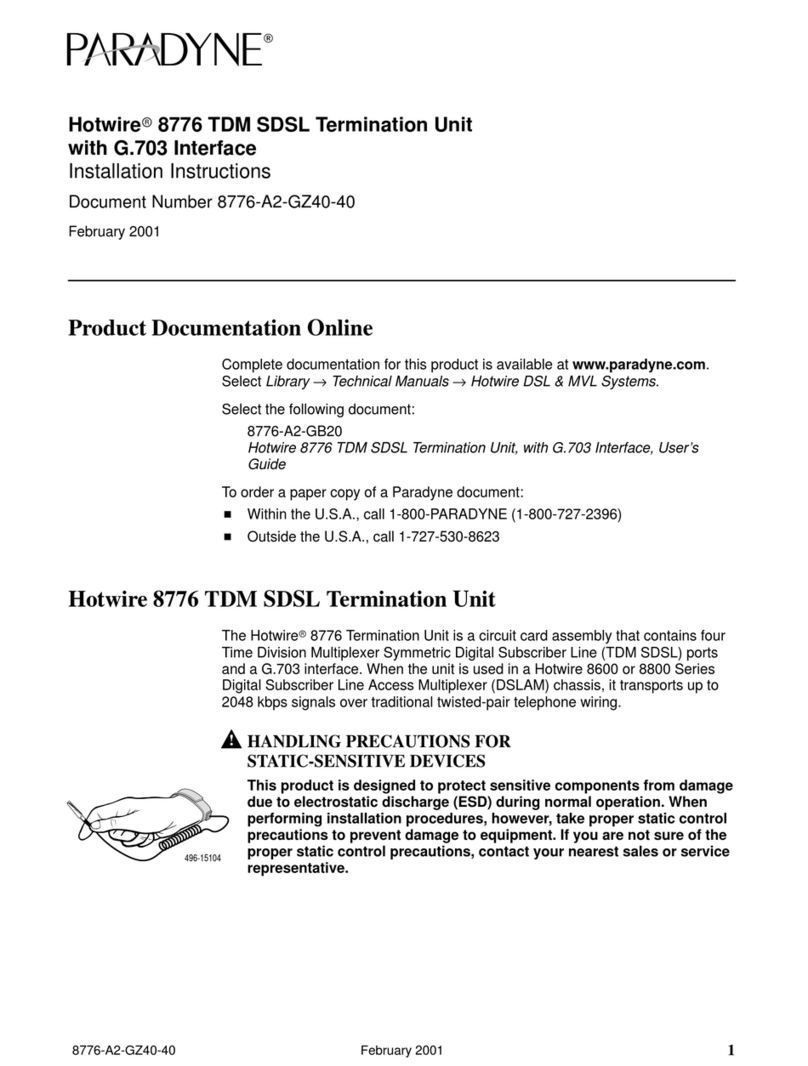
Paradyne
Paradyne Hotwire 8776 installation instructions
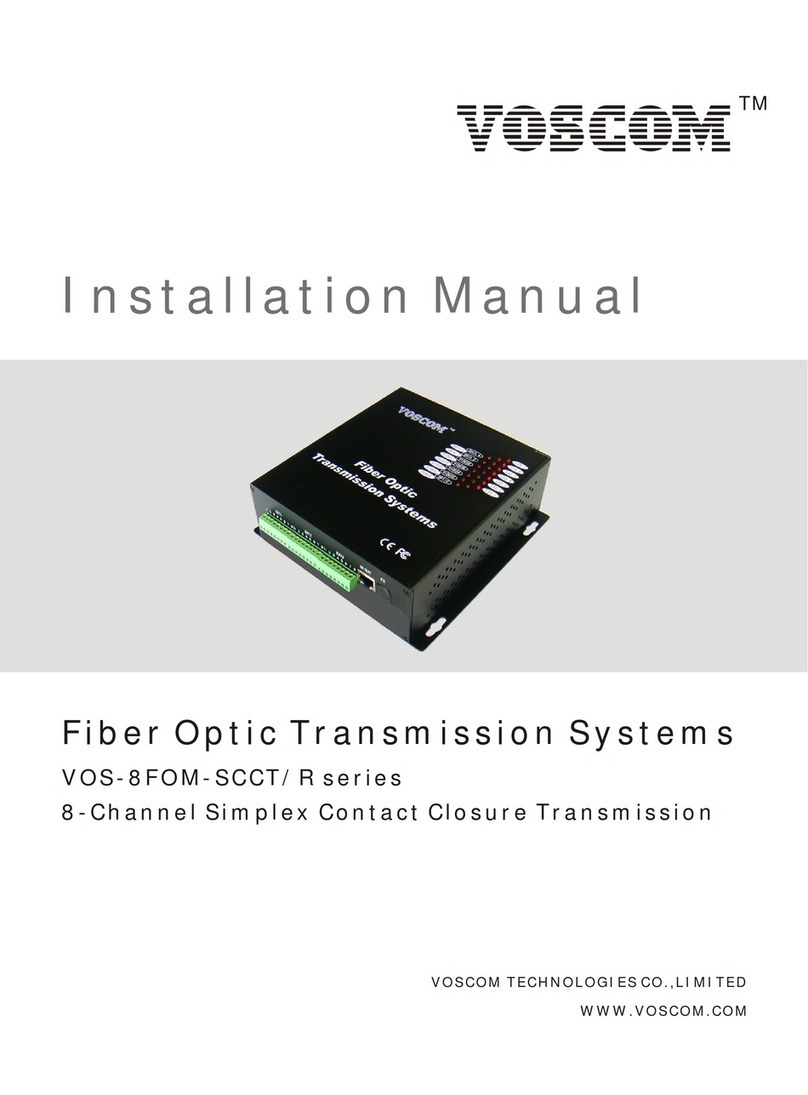
Voscom
Voscom VOS-8FOM-SCC Series installation manual
